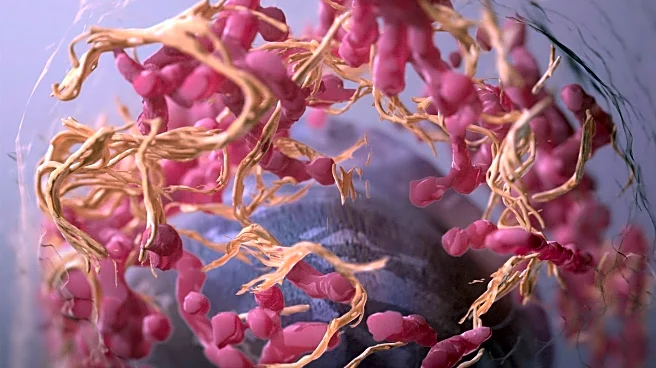What's Happening?
Researchers have developed a machine learning-based approach to predict luminal breast cancer subtypes using polarised light microscopy. The study involved 116 patients diagnosed with ER+/HER2− invasive breast carcinoma, with samples classified into luminal A and luminal B cohorts. The research utilized Mueller matrix imaging to capture structural characteristics of unstained breast cancer biopsy samples, providing comprehensive polarisation data. This method allowed for unbiased assessment of tissue polarisation properties without pathologist-assisted selection. Various machine learning algorithms, including logistic regression, support vector machine, and random forest, were evaluated to determine the optimal classifier for distinguishing between luminal breast cancer subtypes. The study aimed to enhance model robustness and reduce overfitting by employing feature selection and cross-validation strategies.
Why It's Important?
This development is significant as it offers a novel method for classifying breast cancer subtypes, potentially improving diagnostic accuracy and treatment planning. By leveraging machine learning and polarised light microscopy, the approach provides a non-invasive and objective means of analyzing breast cancer tissues. This could lead to more personalized treatment strategies, enhancing patient outcomes. The use of machine learning in medical diagnostics represents a growing trend towards integrating technology in healthcare, which could streamline processes and reduce human error. The study's findings may also contribute to broader applications in cancer research, offering insights into tissue microstructure and its implications for disease progression.
What's Next?
Future research may focus on refining the machine learning models and expanding the dataset to include more diverse patient samples. This could improve the generalizability and accuracy of the classification system. Additionally, researchers might explore the integration of this technology into clinical settings, potentially transforming how breast cancer is diagnosed and treated. Collaboration with healthcare institutions could facilitate the adoption of these methods, leading to advancements in personalized medicine. Stakeholders such as medical professionals, healthcare providers, and patients stand to benefit from these developments, as they promise more precise and effective cancer management strategies.
Beyond the Headlines
The ethical implications of using machine learning in medical diagnostics include concerns about data privacy and the need for transparency in algorithmic decision-making. Ensuring that these technologies are accessible and equitable across different healthcare systems is crucial. Moreover, the integration of machine learning in healthcare raises questions about the role of human oversight and the potential for technology to replace traditional diagnostic methods. Long-term, this approach could influence the cultural perception of technology in medicine, highlighting the balance between innovation and ethical responsibility.










